Get PeakVisor App
Sign In
Search by GPS coordinates
- Latitude
- ° ' ''
- Longitude
- ° ' ''
- Units of Length

Yes
Cancel
Share ×

Scan the QR code and open PeakVisor on your phone
❤ Wishlist ×
Choose
Delete
The Khibiny is the largest mountain massif on the Kola Peninsula in the Murmansk Region. However, in terms of the area it is quite small, just about 40 km from west to east and 35 km from north to south. What is cool about it though is that it is located 150 km north of the Arctic Circle. The geological age of the range is about 390 million years. After so many aeons, the Khibiny Mountains have finally settled down becoming gentle and basically now resembling giant hills, which are quite pleasant to conquer.
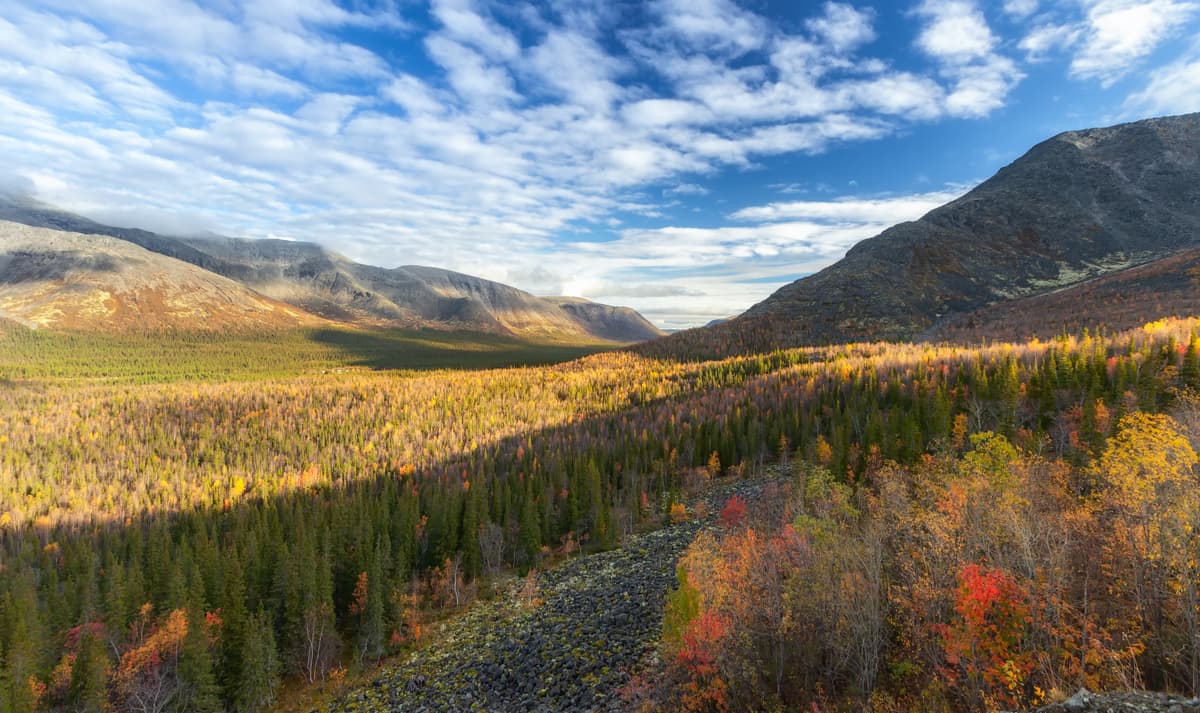
The mountains are an impressive plateau-shaped massif with predominantly plateau-like peaks ranging from 900 to 1100 m and steep slopes. The slopes are covered with glaciers and snowfields. The mountain massif is divided into the Western (Little) and Eastern (Big) Khibiny by a through valley running from north to south (Kuniok – Kukisiok – Big Belaya). The highest point is Mount Yudychvumchorr (1,208 m).
In the centre, there are two plateaus of Kukisvumchorr and Chasnachorr. The height of these plateaus is 1,200 m above sea level. The total area is 1300 sq. km. The Khibiny are particularly famous for their gorges – cracks with steep walls that can be up to 70 meters wide and several dozen meters deep. The slopes have quite a smooth outline, almost devoid of sharp ribs and ridges, which is a consequence of relief-forming processes in the glacial period.
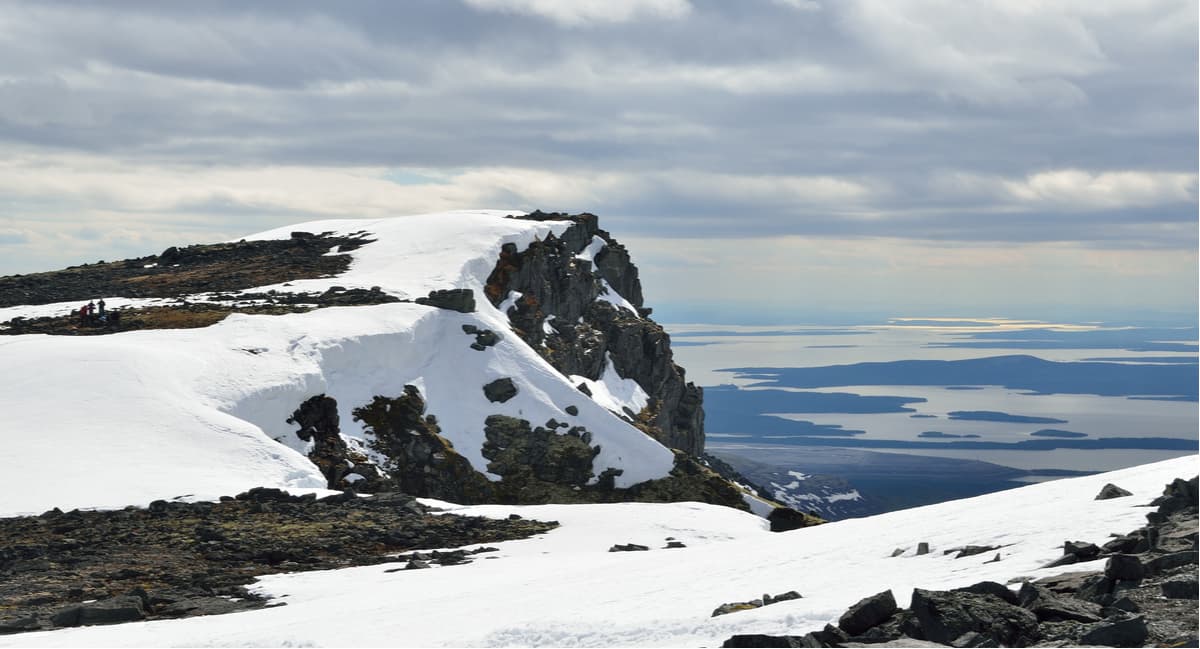
The geographical location of the mountains is very picturesque. The Khibiny lie between lakes Imandra and Umbozero. Their northern extension is the so-called Babia tundra (might be translated as petticoat tundra by analogy with petticoat government), the southern border is the Kandalazhskaya Bay of the White Sea. At the foot of these mountain ranges lie the cities of Apatity and Kirovsk. And at the foot of Mount Vudjavrchorr, in a fantastic place on the shores of Lake Bolshoi Vudjavr, there is the Polar-Alpine Botanical Garden – the only botanical garden in the world situated within the Arctic Circle. You can see about 1000 species of, yes, you see it right, tropical and subtropical plants collected from all kinds of semi-deserts. And what's amazing is that they flourish here!
Strange as it may seem, the Khibiny are still massively unexplored mountains. Their mysteriousness and wilderness lure climbers and simply fans of extreme sports in any season of the year. To ease the acquaintance with the region, there is the Khibiny Open Cup held annually.
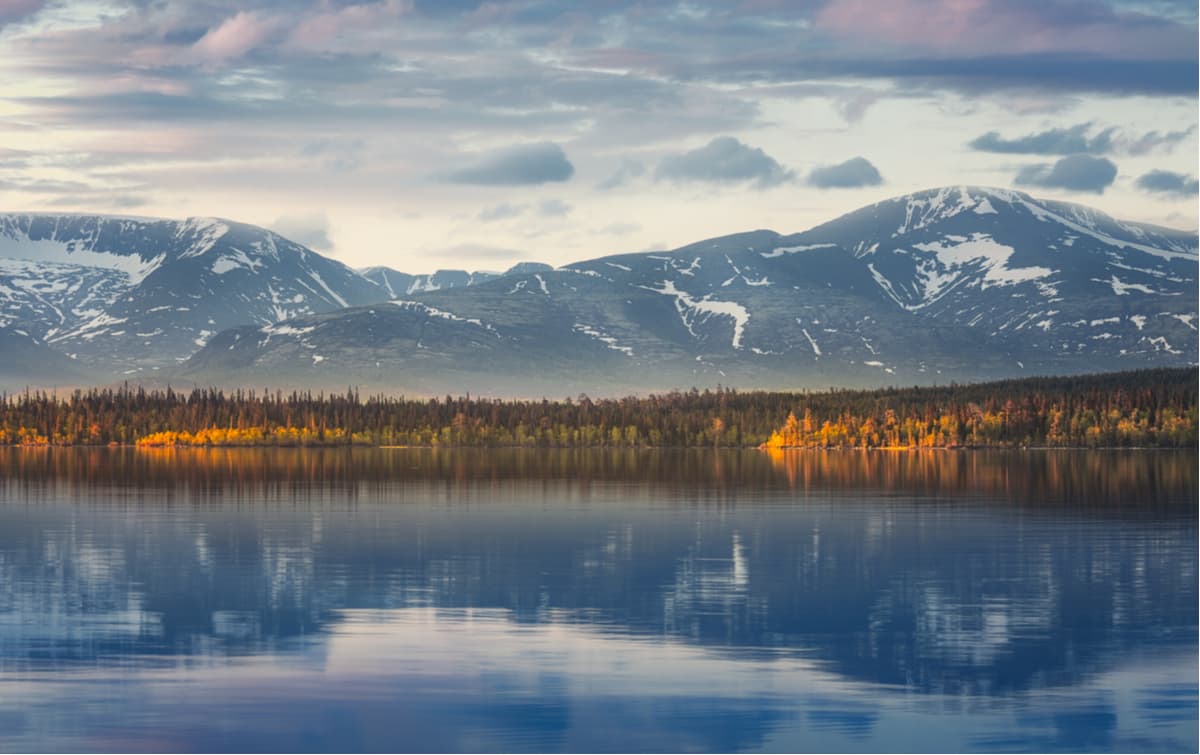
The Khibiny Mountains are located in the northern taiga zone. The mountains are characterized by a change of high-altitude belts of vegetation cover: the forest belt is replaced by a transitional subalpine belt with weird-looking birch elfinwoods, and then by a mountain tundra belt. In the lower forest belt, the age of trees is 150 - 200 years or more, in the upper belt where the crooked birches grow the trees are younger, but they still live longer than their counterparts growing in more southern areas.
At the bottom of the mountain range, there are evergreen forests with Reindeer lichen and moss. As you are climbing higher, coniferous trees (pines, spruce) get replaced by birches, shrubs and tall grass. The forests usually consist of Siberian spruce and winding birch. The spruce here is not high, up to 15-20 m. There is alder, aspen, mountain ash, tree willows and cherries. Thickets of low juniper can be seen less often but they are quite frequent nonetheless. Trees and shrubs grow very slowly here. Under the onslaught of strong winds and snow, plants are mainly creeping as they are pressed against the slopes. It is very common to see crooked dwarf birches, shrubby willows, spruce in the so-called skirts when the lower part of the tree crown is very thick and begins right from the ground.
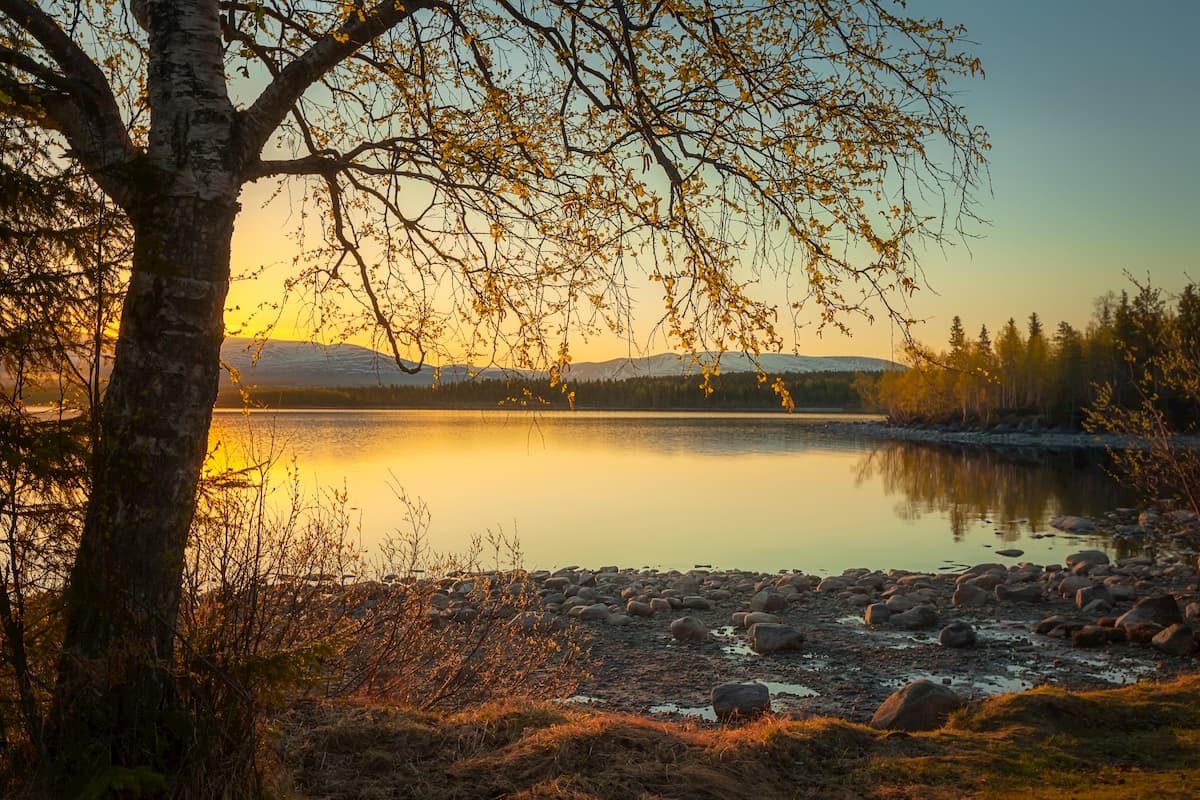
Due to severe climatic conditions, almost all Khibiny herbs are perennial. The grass cover is very diverse. There are Lapland goldsmiths, Linnaeus shield, wavy hair grass, Loiseleuria procumbens with its bright pink flowers, blue mountain heath and dryad with delicate white flowers, as well as species that are not found elsewhere, such as herb Paris (called crow's eyes by the locals) poisonberry aka rattlesnake herb. The latter is quite bitter, so the likelihood that you will take another bite is low, but the berries are the most toxic part of the plant. A healthy adult will experience poisoning from as few as six berries. Ingestion of the berries causes nausea, dizziness, increased pulse and severe gastrointestinal discomfort. The toxins can also have an immediate sedative effect on the cardiac muscle tissue possibly leading to cardiac arrest if introduced into the bloodstream. As few as two berries may be fatal to a child. Please abstain from eating any berries that you don’t know, they may kill you faster than you say Quidditch!
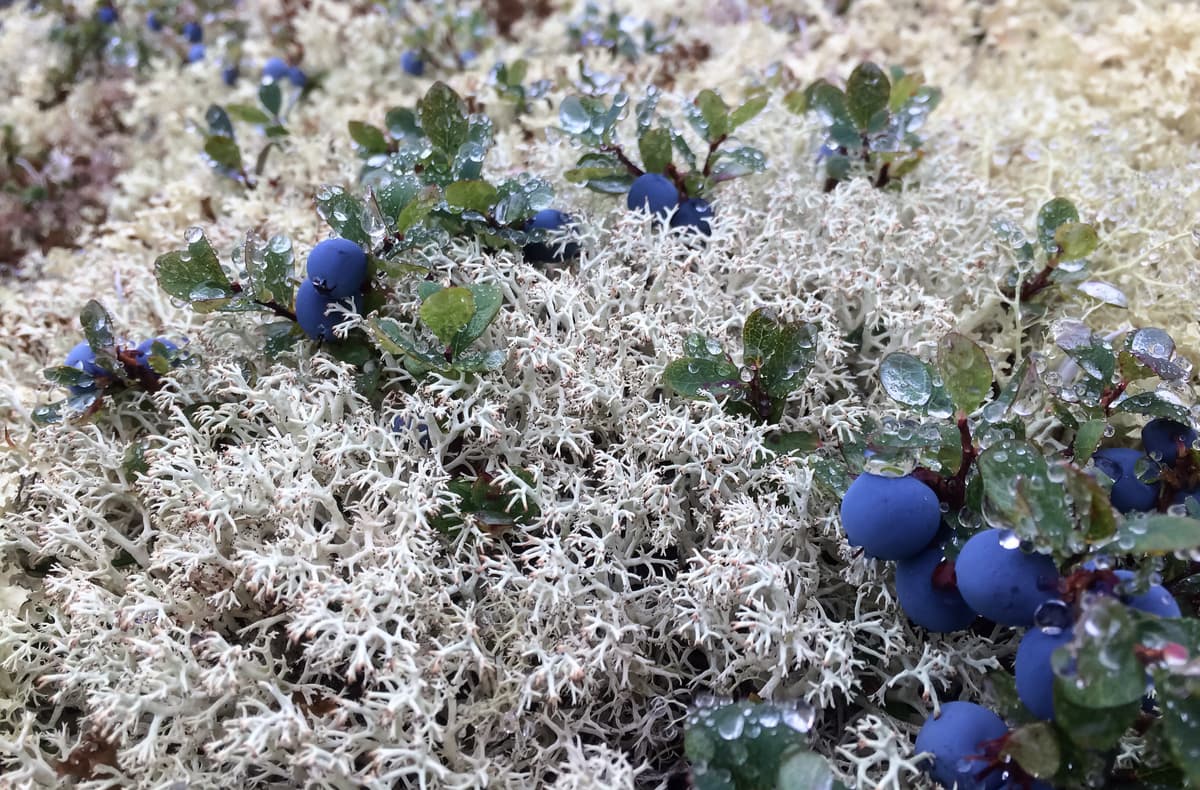
Most plants form compact turfs, tightly pressed to the ground, others nest in cracks of stones like cushion pink (Silene acaulis), polar and stony willow, London pride (Saxifraga umbrosa) long whips of which hide in the cracks of rocks. On the sloughing rocky slopes, there is crazyweed (Oxytropis) and eye-catching Lapland poppies with lemon-yellow flowers.
There is a great abundance of berry bushes: bilberry, huckleberry, blueberry, wineberry, crowberry, cloudberries etc. Late July and early August is the ripening season for most berries, early September is the time to harvest lingonberries. In the forests, there are also ash berries and stone brambleberry, whereas in the swamps there are many cranberries.
When you move closer to the peaks, there appears tundra and plants gradually subside giving way to stone fields.
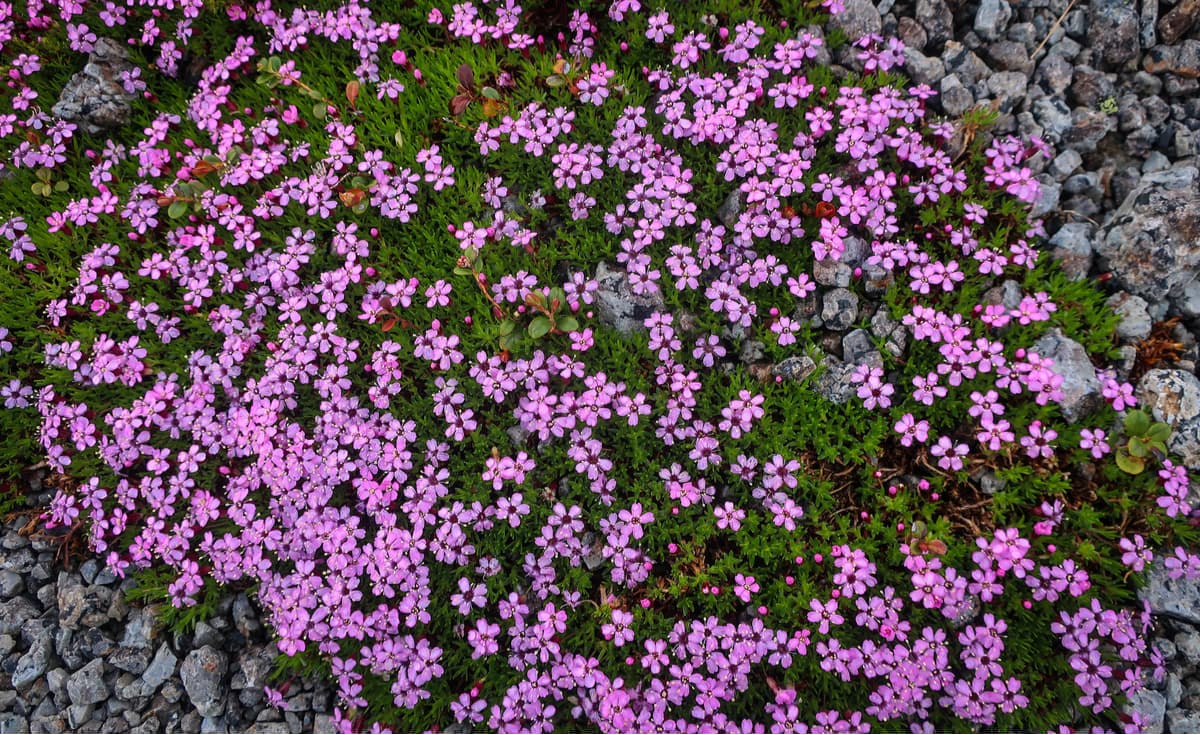
The animal world of the Khibiny Mountains is inhabited by unique species, although not so many of them. There are 27 species of mammals here. Among the predatory animals are polar foxes, wolverines, wolves, and foxes. Ermines and martens can be seen by Lake Imandra. Arctic hare and squirrel can be found in the forest zone. The dwarf shrew and Norwegian lemming, which belongs to the group of voles (the Saami call lemming ‘a deer mouse’), are very numerous in the Khibiny Mountains. Brown bear is still found in scarcely inhabited areas. The bear feeds on berries, mushrooms, which are plenty here in August, sometimes it hunts young deer. Wild reindeer in the Khibiny Mountains are now extremely rare, almost all of them have been hunted to extinction.
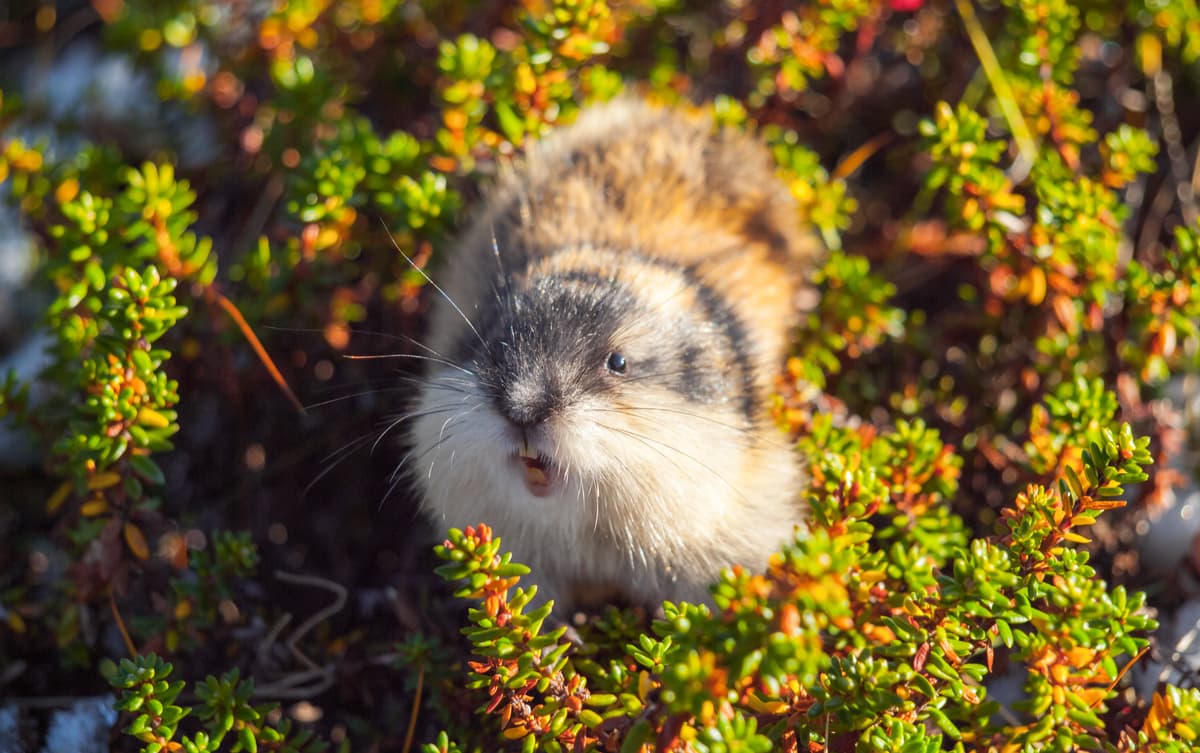
Among birds, there are more than a hundred species. The forests are home to willow grouse and motley grouse in summer, thrush, common redpoll, grosbeak, finch, tit, and Siberian jay.
In the cold, clear, green-blue waters of the rivers and lakes of the Khibiny massif, there live salmon species of various types, lax, bull trout, mountain trout, grayling and a great lover of the coldest water – a predator trout, as well as all kinds of perch and pike.
As to the insects, the one that rules this world is a pestilent mosquito, and in mid-summer, the gnat (midge) joins it. And they are ten a penny here! There is no escape from them. There are a few butterflies, and they are not a frequent sight, however, there are many brightly coloured bumblebees.
Climatic conditions are severe subarctic. The weather in the Khibiny is unstable and almost instantaneously the sun can be followed by snow even in summer, sleet, wind, fog. Visibility during blizzards is minimal, the wind can blow a man off the edge of the plateau. Stable snow cover is formed in early October and lies there until June. Climatic conditions of the plateau and peaks are much harsher than in the valleys. In open spaces of the summits, the wind can blow with speed up to 50 m/s. The atmospheric pressure can change dramatically and very suddenly. Heavy frosts in winter combined with strong winds and almost 100% humidity lead to rapid icing. In winter, the mountains are quite avalanche-prone. The pitch-black polar night lasts from December 10 to January 3. The precipitation is from 600-700 mm in the valleys to 1600 mm on the mountain plateaus. During the year, precipitation is distributed almost evenly, there is slightly more in summer though.
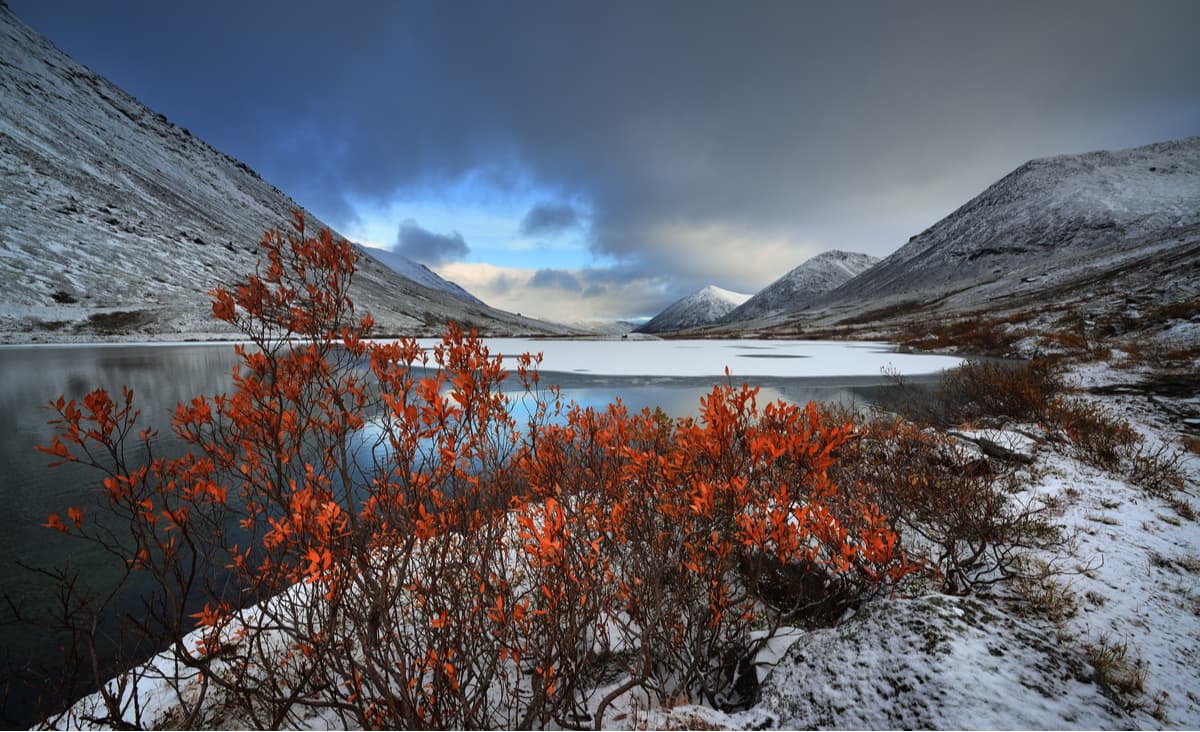
Summer is short and wet, in the mountains it lasts approximately 60-80 days without frost. The summer period with an average daily temperature above 10° in the foothills lasts approximately 70 days. The polar day lasts 50 days from 31 May to 13 July. From August to mid-April, you can observe the northern lights, one of the most beautiful phenomena on Earth. its duration varies from a few minutes to a whole day.
The general name of the Khibiny is derived from the Finnish word "hiben" meaning a mountain or a hill. The sound combination "chorr", in which each name here ends, means a mountain massif with a flat, forestless peak. That is the name given by the Saami indigenous people.
Mount Yudychvumchorr (1,208 m) means a ‘humming mountain’ in Sami. The locals say that it does make strange sounds from time to time as if it were talking. Specialists explain this phenomenon by the wind howling.
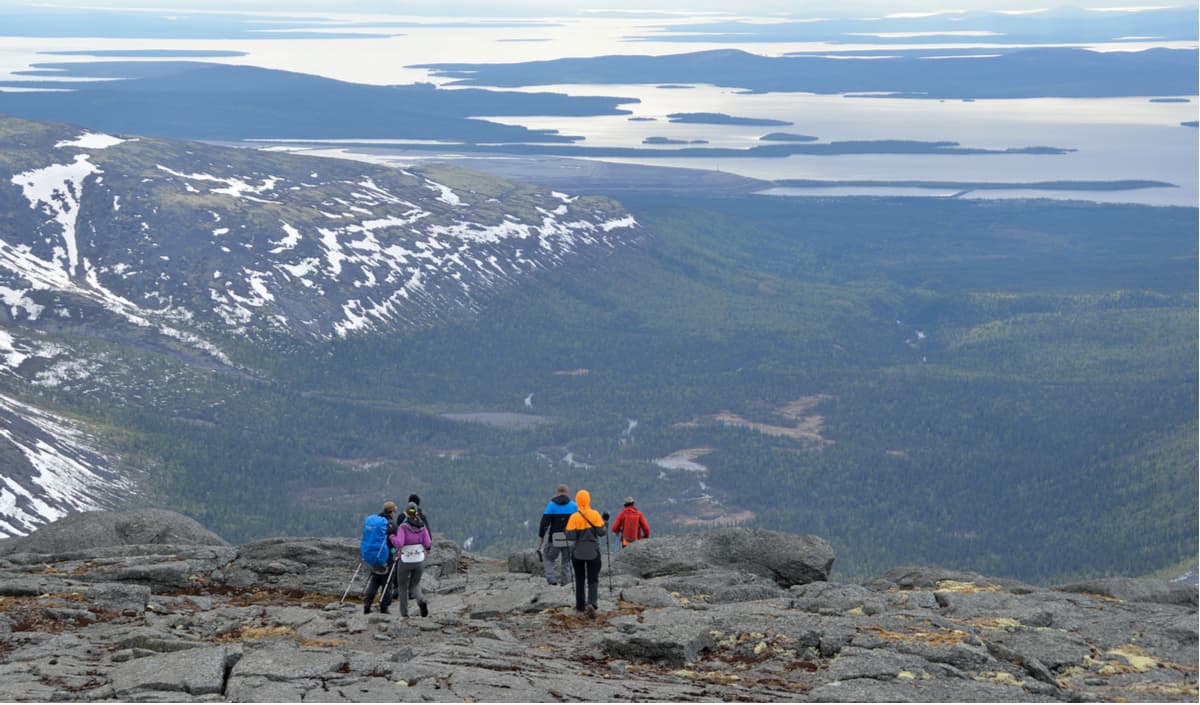
Kukisvumchorr (1,141 m) is translated as a ‘mountain massif near the Long Valley’. Not far from the peak, there is the Kukisvum valley aka the Long Valley. Mount Kukisvumchorr is suitable for comfortable riding only on its southeast slope, but the western slope is also widely known among athletes as it hosts all-Russian and world freeride competitions.
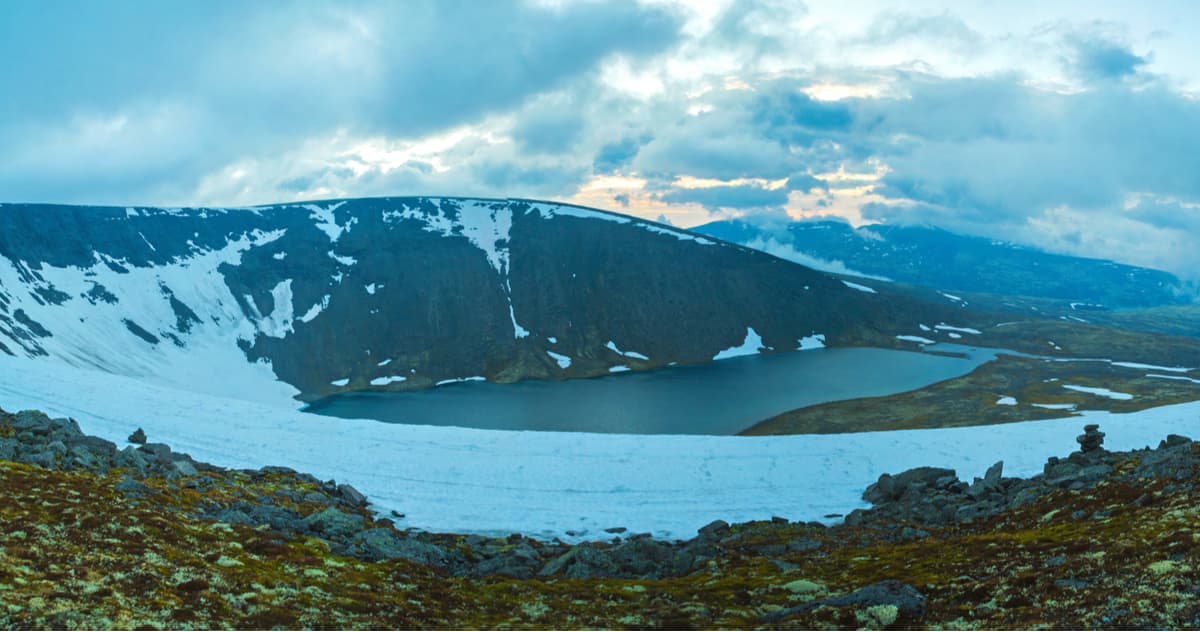
Mount Vudjavchorr(1,073m) is not suitable for a tourist resort since its slopes have an excessively large angle, more suitable for climbing.
Chasnachorr (1,189 m) translates as a ‘woodpecker's mountain’.
Plateau Rasvumchorr (1,055 m) is a sort of a ‘grass flat mountain’.
Aykuaivenchorr (1,075 m) is ‘a mountain with the head of God’s mother’. The poetic translation of Aykuaivenchorr is "Sleeping Beauty". The most developed slopes for skiing are here, on Mount Aykuaivenchorr except for its north-eastern precipice-like side. There are dozens of prepared pistes. This mountain is in close to Kirovsk districts, it is just 4 km away. Due to close proximity to the town, both Aykuaivenchorr and Kukisvumchorr are well equipped with ski slopes and lifts. Aykuaivenchorr is home to the local skiing movement as well.
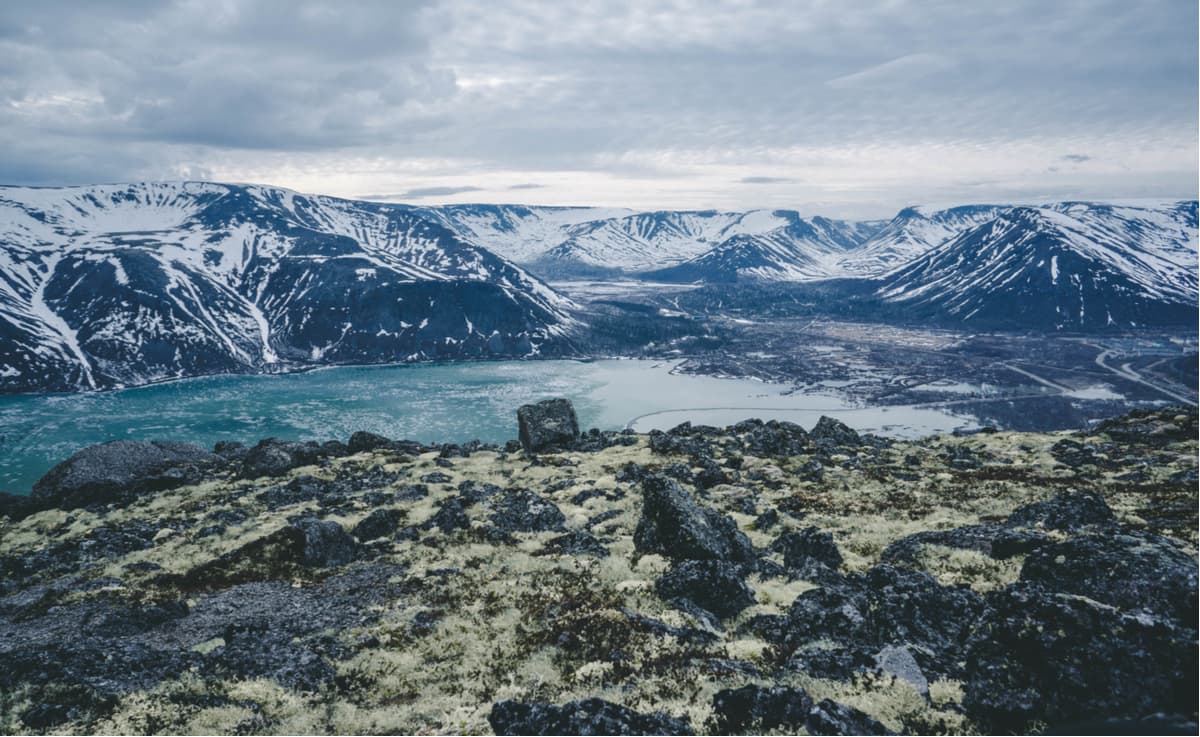
Despite their low altitude, the Khibiny Mountains have a very diverse landscape. There's almost nothing like the Caucasus or the Alps. In the south and central part, wide mountain cirques with an abundance of fringes and steep slopes are especially common. The mountains begin in the area close to Apatity and Kirovsk right by the residential areas, which makes those two towns, especially Kirovsk, the centre of winter sports. Kirovsk is a small town with a population of 26 thousand people, situated on the southern side of the Khibiny Mountains in the hilly Umptek valley at the height of 368 meters above sea level.
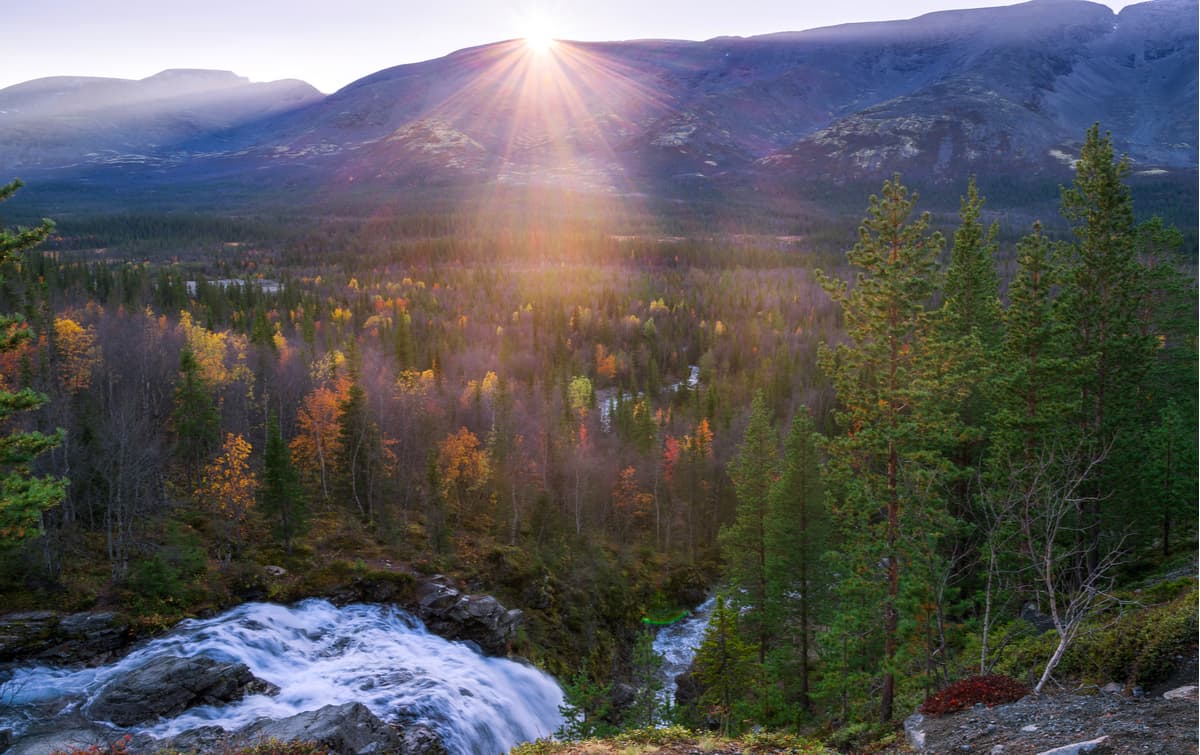
For skiing and snowboarding enthusiasts, there are two almost neighboring ski resorts in the Khibinsky Mountains, also known as Khibiny, near the city of Kirovsk. These are large Bigwood and small Kukisvumchorr ski resorts, which are also the main large ski resorts near Murmansk, the capital of the Murmansk Oblast, as well as Saint Petersburg, which is 1,216 km (755 mi) to the south.
The ski resort of Bolshoy Vadyavar or Bigwood nowadays unites all the slopes of Mount Aykuaivenchorr and is the most developed and popular among tourists. There are good hotels, restaurants, and entertainment facilities. Besides, the equipment of the ski slopes is the most modern as the ski lifts were installed about 5–6 years ago. In total, there are 8 lifts and 25 pistes, the total length of which is more than 28 km (17 mi).
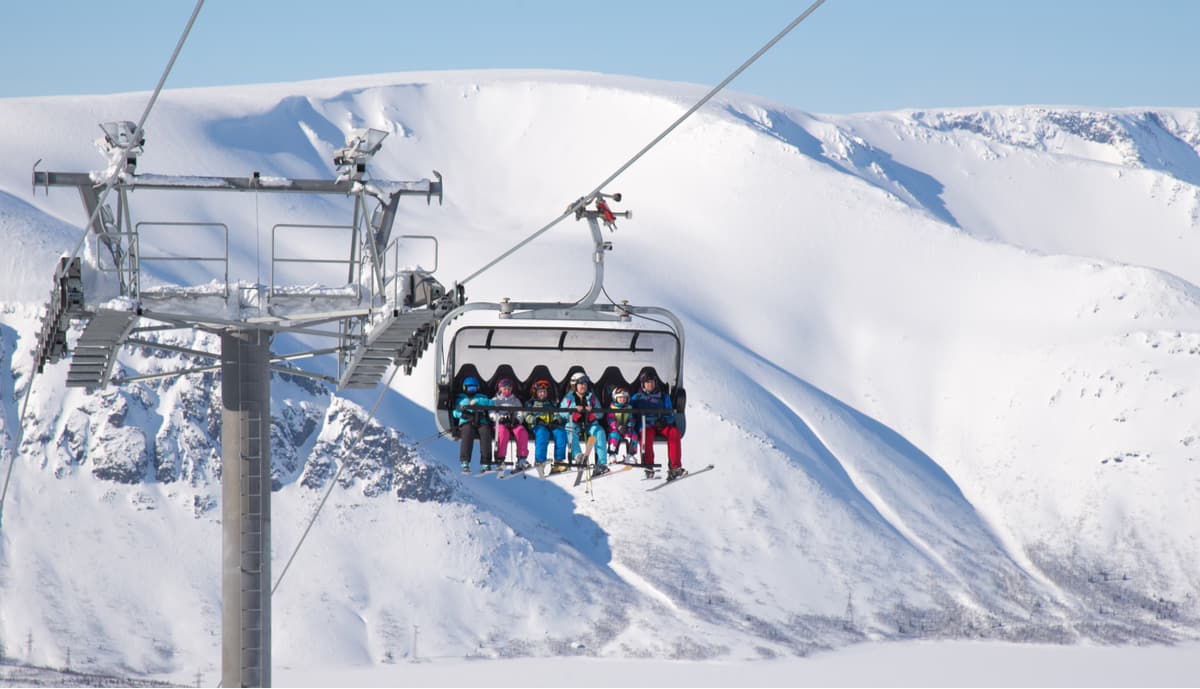
There are two parts of the resort:
The second most popular ski resort in the Khibiny Mountains is Kukisvumchorr, located on the eastern side of the southern end of the Kukisvumchorr mountain range just to the north of Bigwood. It is equipped with 7 ski lifts, which will bring you to 7 ski runs of varying difficulty (1 training, 2 blue, 3 red, and 1 black) with a total length of more than 10 km (6 mi). The height difference here is about 500 m (1640 ft). At the foot of the mountain, there is also a ski rental service, ticket offices, various cafes, parking lots, and a hotel.
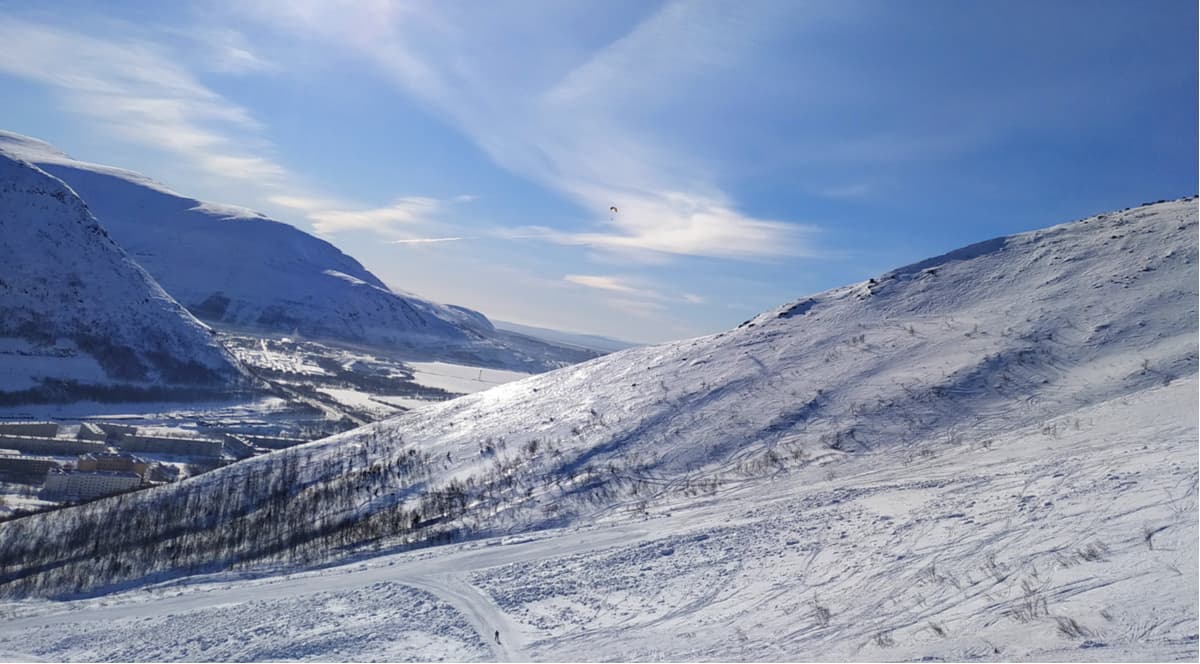
Check the Khibinsky Mountains ski resorts map on the larger Murmansk Oblast and Russia ski resorts maps in the World Mountain Lifts section of the site. It includes information about open ski lifts / slopes in Khibiny in real-time with opening dates and hours. There are also year-round cable cars, funiculars, cog railways, aerial tramways, and all other types of mountain lifts.
The Khibiny is the first mountaineering region in Russia located within the Arctic Circle. The area is actively developed by climbers, there are routes from 1B to 5B complexity.
The most popular for winter climbing are the slopes of Takhtarvumchorr and Vudjavchorr peaks, located only a few kilometres from Kirovsk. As a rule, the descents are simple but quite diverse. The likelihood of stonefall is not high, you can always find overnight shelves. However, fogs are quite frequent and if you have difficulty orienting, stay where you are or have a very reliable compass or GPS.
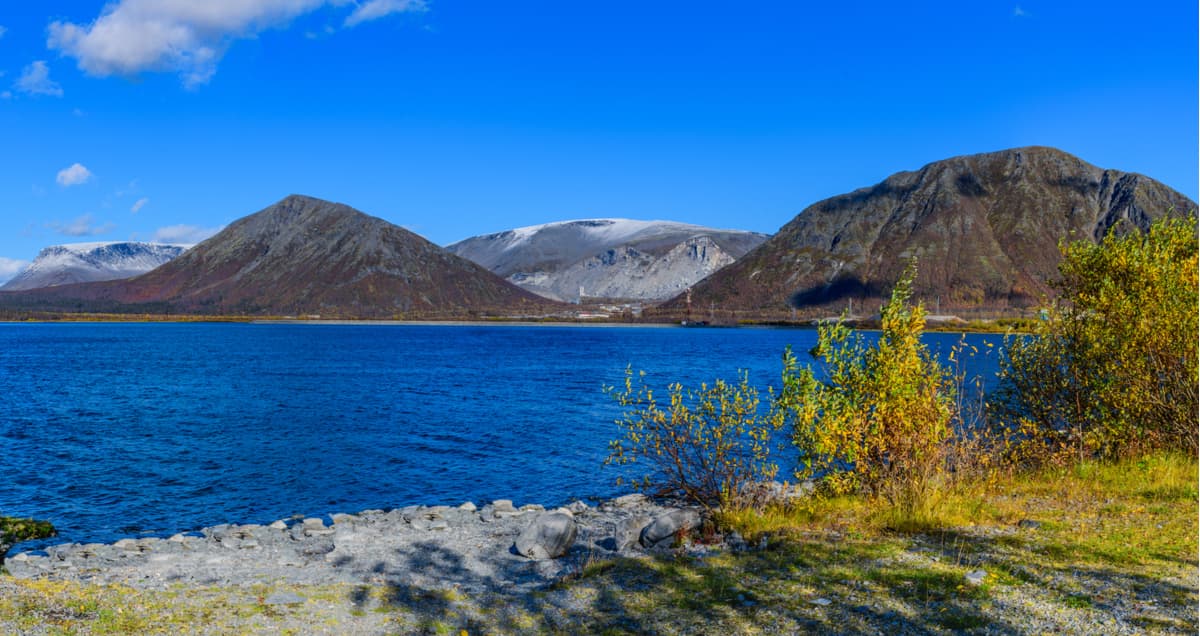
Additional acclimatization is not required, but taking into account the oxygen deficiency typical for polar regions, the feeling of altitude on the Khibiny plateaus corresponds to 3000 – 3200 meters in the Caucasus or the Alps. The apparel in winter is about the same as for climbing 6000 - 7000 meters in more southern latitudes. It is possible to conduct training on combined routes since their categories of difficulty meet the requirements necessary to meet the standards up to Category 1.
Along the western edge of the Khibiny runs the October railway, trains stop at the stations of Apatity, Khibiny, Nephelinovye Sands, and Imandra. From the south along the massif is the highway Apatity-Kirovsk. The way to most mountaineering routes takes about two hours.
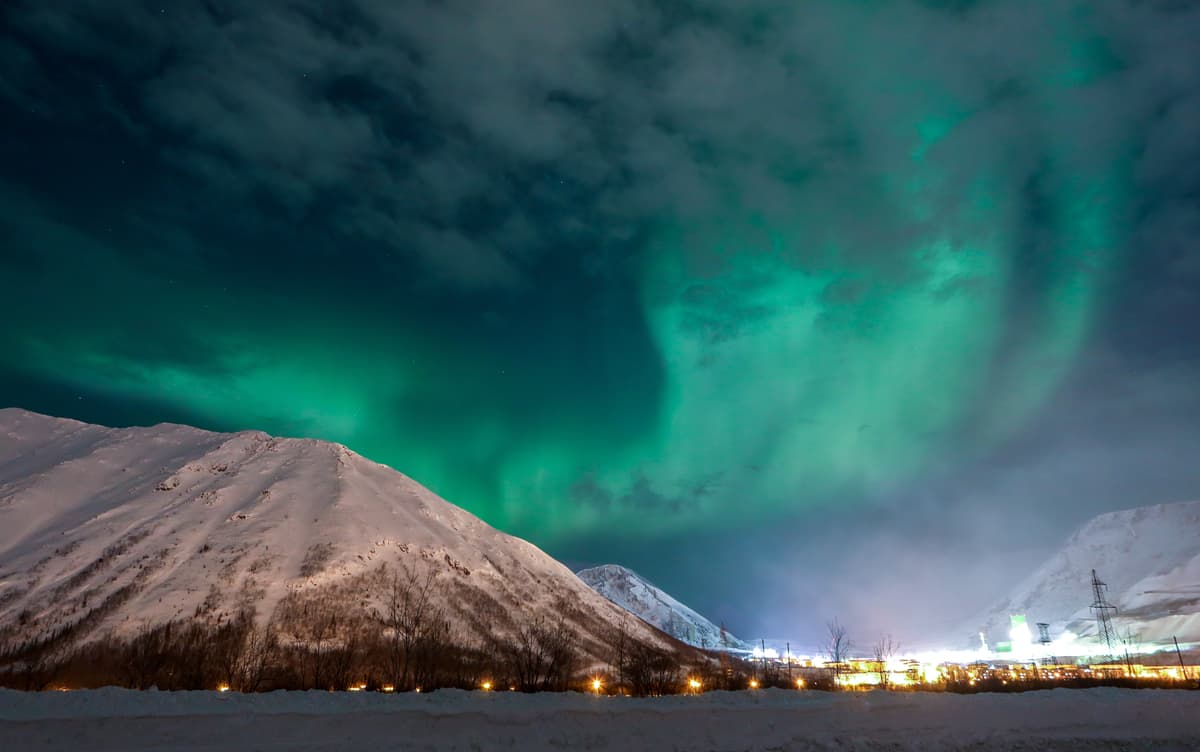
When planning a visit to Kirovsk resorts, you should remember that there is a polar night from December 10 to January 3. During this period, the sun does not rise above the horizon and except for a couple of somewhat twilight hours, there is no natural light. In the following months, the daylight increases, but it fully covers the ski slope working hours only from mid-February.
Besides ski resorts, there are a number of interesting sights in Kirovsk. There is the Clock Tower or Kirovsk Big Ben in the city central square. Inside it and in the adjacent building, there is a modern museum and exhibition complex free of charge for visiting.
The unique Polar-Alpine Botanical Garden Institute is open all year round, they run a project called ‘Adopt a Tree’ where you can plant a tree next to Big Vudjavr Lake in special alleys and take care of it. A couple of hundred meters from the garden, behind the sanatorium Tirvas, there is located the famous local Snow Village, an impressive gallery of ice and snow sculptures, available to visit throughout the winter season. No inferior to the Snow Village is the winter art park called the Mysterious Forest, located near the southern side of the Bigwood. It is recommended to visit at night.
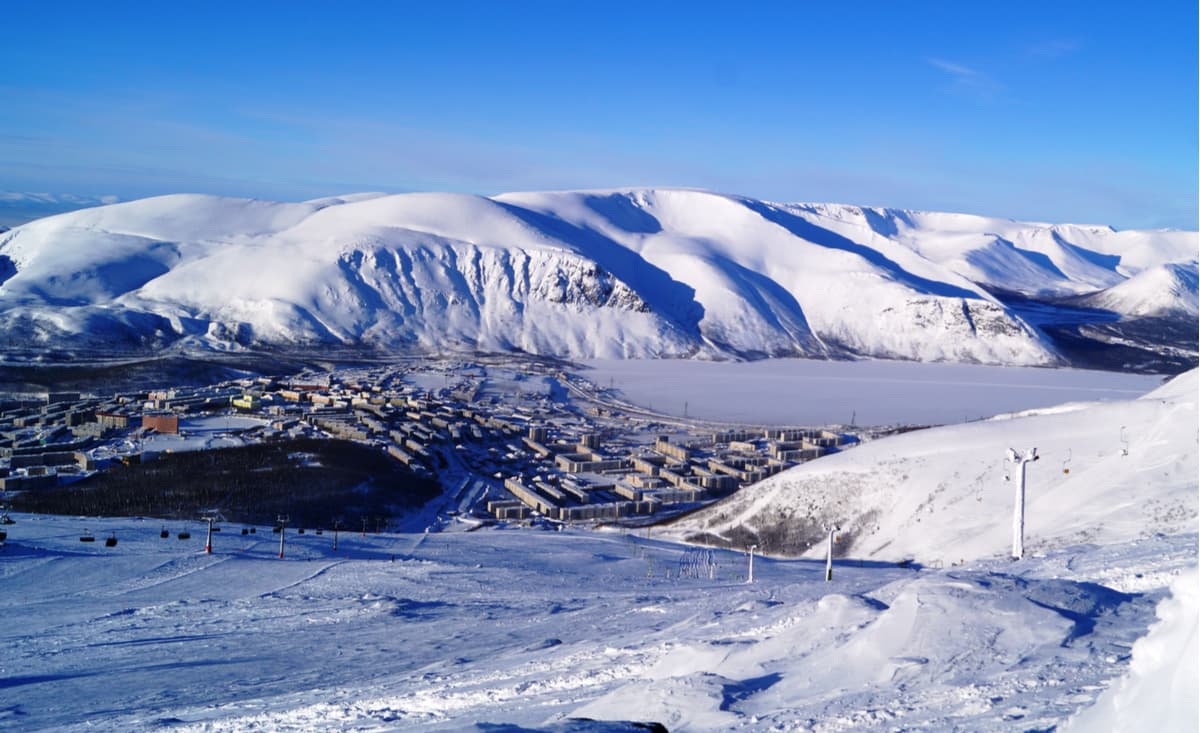
There are several ways but they all lead through Apatity.
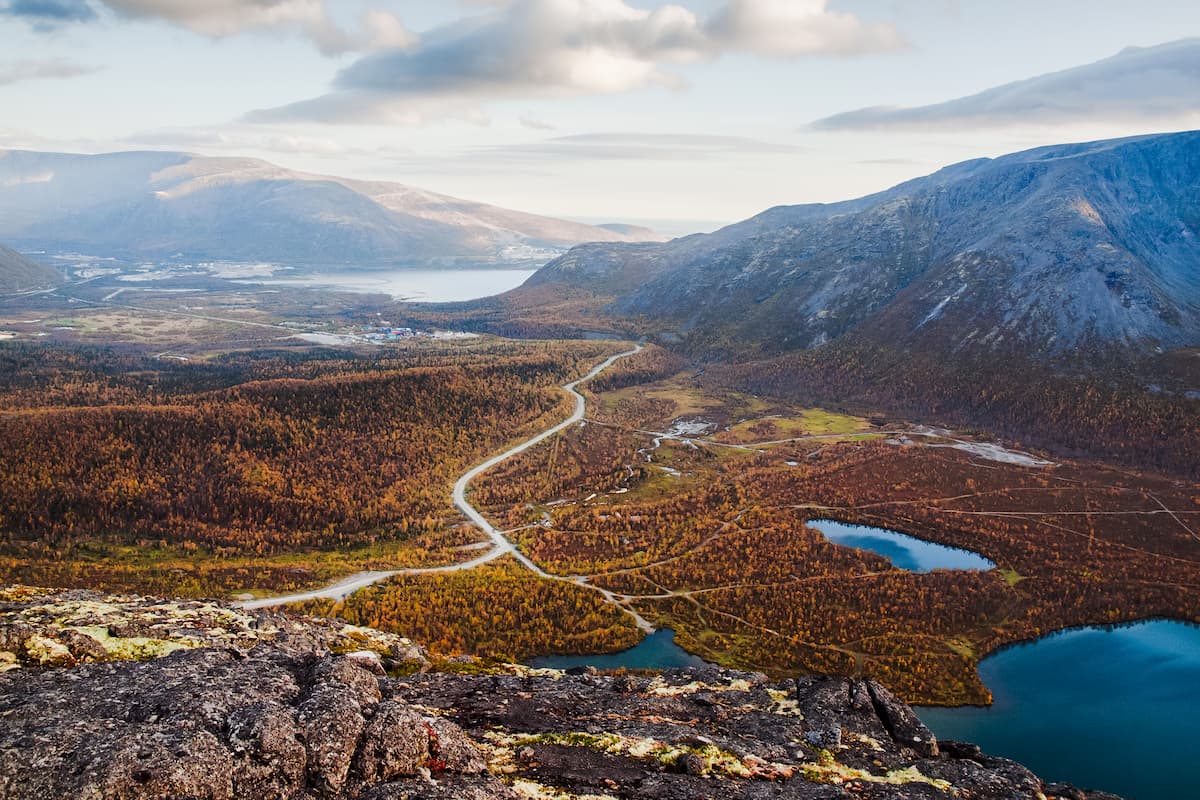
Apatity and Kirovsk have good transport communication, there are buses and shuttle buses, the distance between the towns is less than 20 km.
There are several railway stations along the western slope of the Khibiny: Nephelinovye Sands, Khibiny, and Imandra. Only local trains stop at the first two stations. From these stations, you can reach the valleys of the rivers Malaya Belaya, Medvezhy Log, Goltsovka (the Meridionalny brook).
In the southeast of the Khibiny, there is a mine and Koashva settlement connected with Kirovsk by regular bus service. Koashva is located in the lower part of the Vuonnemyok River valley.
Explore Khibinsky Mountains with the PeakVisor 3D Map and identify its summits.








